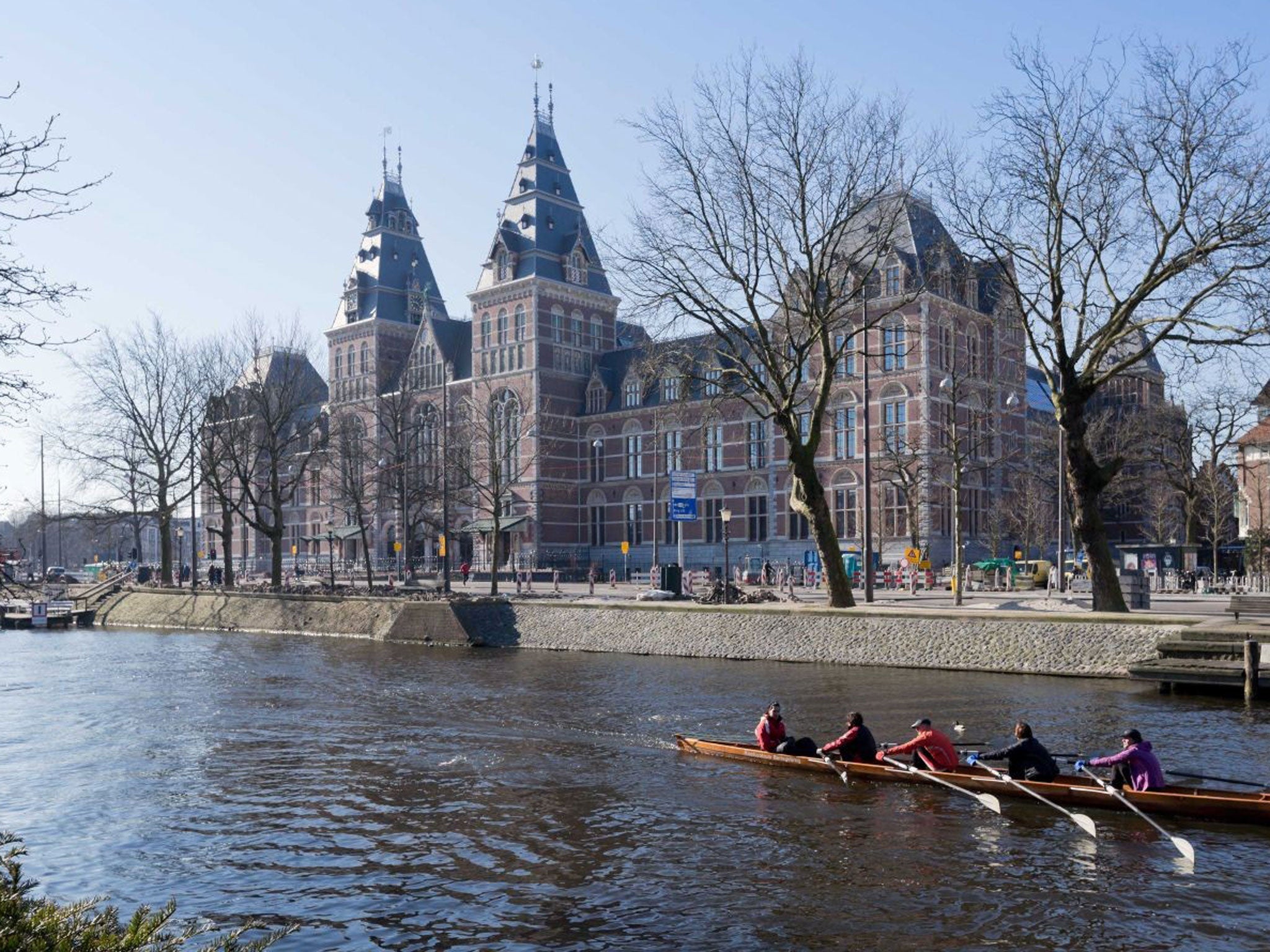Grey matters when it comes to bringing out the best of the Dutch masters at the Rijksmuseum
Plus: New film The Gatekeepers is a gate through the granite wall and the secrecy surrounding John le Carré's latest

I visited the Rijksmuseum last week, by great fortune hitting a moment between the official press day (Scrum 1) and the public opening last Saturday (Scrum 2). There was the odd drawback to this privileged access. I found myself gazing at Rembrandt's The Night Watch – one of the great paintings of the world – while a workman nearby used an angle-grinder to fit non-slip treads to a staircase.
But there were also advantages. Just a little earlier (before Angle Grinder arrived), I had stood in front of Vermeer's The Milkmaid entirely alone. No jostling crowd. No one leaning in to read the label. No half-overheard commentary on its celebrity. Just that lambent image of domestic concentration, all the more lovable, I think, for the fact that the floor needs a good sweep and the wall a fresh coat of paint. The plaster behind the maid, pocked with old nail holes, and stained and scuffed above the skirting board of Delft tiles is the texture of life itself – one of the most expressive blank spaces in art.
There was a visual corollary to the rather dazing tranquillity in which I found myself in front of this beautiful painting, an optical equivalent to the silence of that huge empty room ("The Milkmaid" is in one of the side-chapels of the Rijksmuseum's cathedral-like "Hall of Fame"). And that was the wall that lay behind Vermeer's painted one – this time pristine in its finish and coloured an anthracite grey.
This wasn't, we were informed, any old grey. The restorers hadn't sent off to Farrow & Ball for a colour chart and ordered up 16,000 litres of "Down Pipe" or "Brassica". It was a very special bespoke grey, the winner of a talent contest for greys conducted with exacting patience by the curators and architects in order to find the very best backdrop for the gallery's treasures. And while I haven't seen the losing candidates, it's hard to believe that it could easily be improved upon. It's both lustrous enough to feel up to the pictures that hang against it but discreet and tactful enough not compete for attention. It is the perfect servant – a butler of tonalities.
Coloured backgrounds have long been the norm in old master galleries, of course, and though the older fashion was for an ornamented wallpaper, grey has been a front-runner for a while. The Getty Center in LA uses a browny-purple grey for its Impressionist hang, the National Portrait Gallery uses a dark grey for some of its hangs, and the renovated Musée d'Orsay also went for grey (and other dark block tones) after its recent renovation.
Interestingly, though, its director, Guy Cogeval, felt the need to explain that decision at the time: "White kills all painting apart from 20th century and contemporary art," he said. "When you put an Academic or an Impressionist painting against a white background, the radiance of the white, its indeterminate aura around the work, prevents the sometimes very subtle contrast of values from being revealed. In my view, white is the enemy of painting".
The Rijksmuseum has certainly made the case that grey can be a friend, and I would guess you're going to see something similar in more and more old master galleries worldwide. But reading those words by Cogeval, I did find myself wondering about his exception. If white is the enemy of painting then it's surely the enemy of contemporary paintings too, unless he means to imply that they lack subtle contrasts to lose?
And though it's all but impossible to imagine some kinds of conceptual art in anything but a white cube space, I wonder whether that has more to do with inherited piety than practical aesthetics. Or curator terror of getting it wrong. But having seen Vermeer and others luminous against the grey, I can't help hoping someone will take the risk.
A gate through the granite wall
I'm surprised that Dror Moreh's documentary The Gatekeepers hasn't made a lot more noise – featuring, as it does, a former Shin Bet boss who compares Israel to Nazi Germany. If you're interested in the prospects of peace in the Middle East I would suggest it's unmissable. But even if you're not you might be intrigued by the way Moreh mixes CGI with archive photographs and found-footage. My granite prejudice that documentaries are something you should see on television rather than in a cinema has proved hard to shift, even in the teeth of terrific recent examples. But The Gatekeepers took another chip out.
Tinker, tailor, soldier, SHHH!
I think I'm permitted to reveal I spent the week reading John le Carré's new novel, A Delicate Truth. I'm not entirely sure though, because the review copy was accompanied by a nine-point embargo so comprehensive in its terms that it even appeared to forbid reviewers from jotting down quotations as they read. Perhaps it was meant to generate an atmosphere of appropriate hugger-mugger Official Secrecy. Or perhaps it assumed a world frantic for news of Mr le Carrés latest. Either way, I had to struggle not to let irritation at this self-important piece of paperwork cloud my view. And my lawyers have advised me not to reveal what that view is... just in case I've missed an important sub-clause.

Join our commenting forum
Join thought-provoking conversations, follow other Independent readers and see their replies